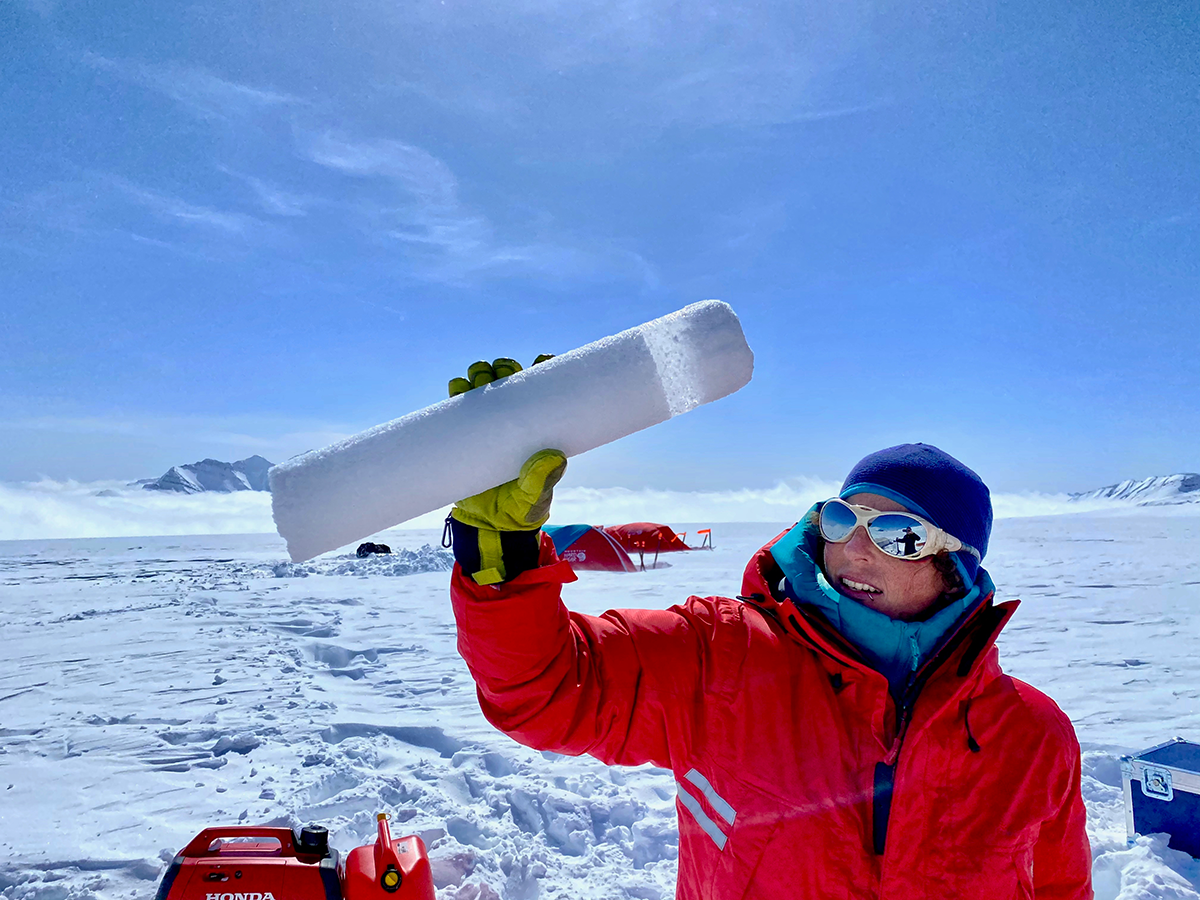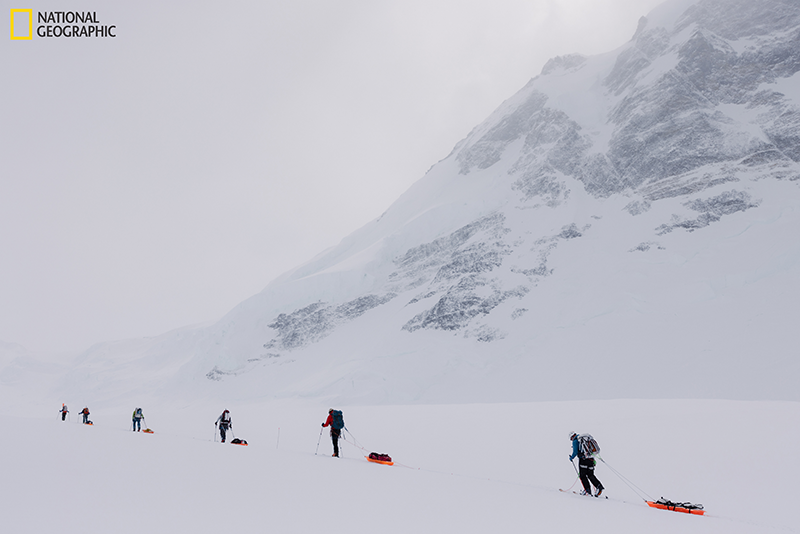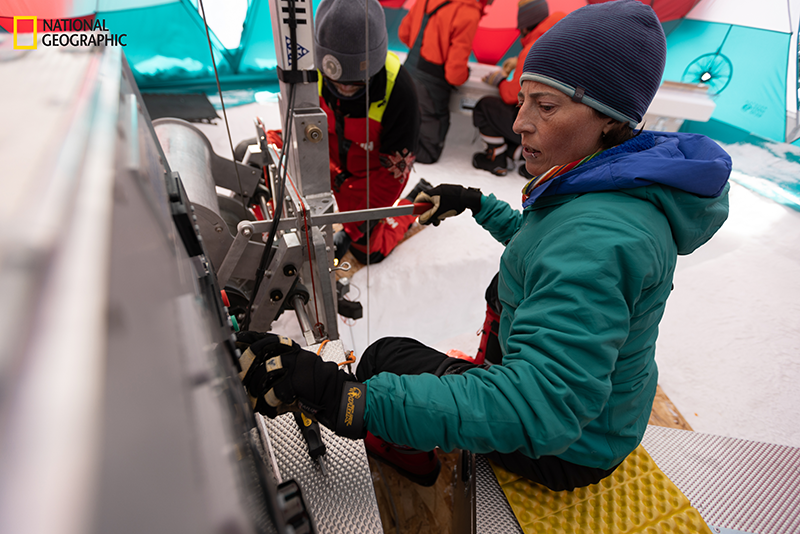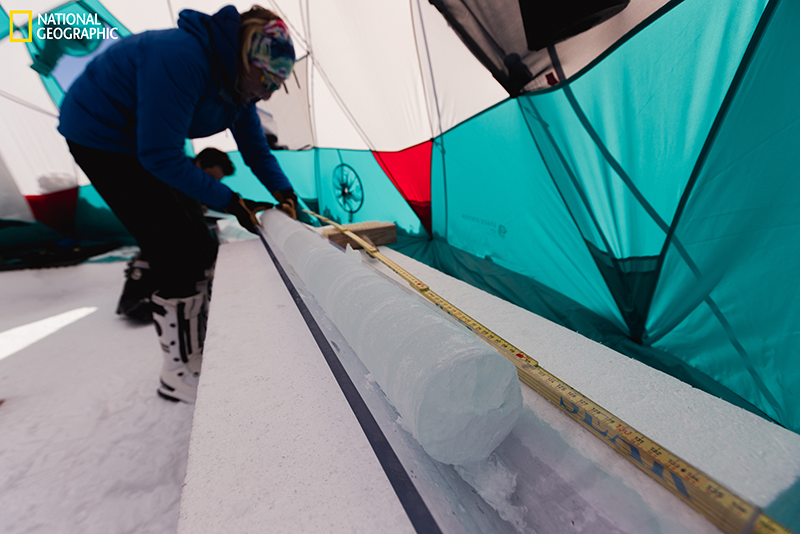Old ice interests scientists for the same reason we put food in freezers: when things freeze, they don’t break down. But we’re not talking about T-bone steaks and ice cream — or, for that matter, a woolly mammoth or anything big enough to see with the naked eye.
“There’s lots of tiny stuff in ice,” says glaciologist Alison Criscitiello, director of the Canadian Ice Core Lab. “The most obvious is volcanic ash, but there’s also stuff like pollen and atmospheric dust.”
Then there are even smaller things that Criscitiello studies.
“As an ice core scientist, I look at different ions like sodium and chloride, as well as other species like isotopes of oxygen,” she says. “Those can tell us a lot about the past.”
The lab houses about 1.4 kilometres of cylindrical ice cores drilled from various sites, mostly from the High Arctic in the far northeast corner of Canada near Greenland. The oldest sample currently in the archive dates to roughly 79,000 BC, during the last ice age.
Careful identification and examination of the ice can offer insight into changes in our climate, pollution and even ancient civilizations. Criscitiello’s team is creating a searchable database to allow other researchers to access the wealth of information at the U of A lab.
Most recently, Criscitiello led a month-long expedition to Mount Logan, Canada’s highest peak at 5,959 metres in the southwestern corner of the Yukon. She and her team successfully ascended the mountain and drilled a record-breaking 327-metre-deep high-altitude ice core in the hope of finding Pleistocene ice that can shed light on the history of climate change in the North Pacific over tens of thousands of years.
Ash me anything
Fingerprinting volcanic ash found within ice cores is a common technique to date ice, meaning to apply a time scale to the different depths in the core sample.
“It’s almost like DNA sequencing,” Criscitiello says, noting that other experts at the U of A do this part of the work by analyzing volcanic tephras, particles ejected from an eruption. “There’s an online library of the chemical makeup of the particles from the biggest volcanic eruptions of the past — big enough that they sent ash all around the planet. You can analyze the particles in your core sample and match them to the right volcanic eruption, and thus the correct date.” This provides a “tie-point” (a depth of an exact known age) to use as a reference point for the layers in the ice core record.
Tiny bubbles
Ice can capture tiny bubbles of atmospheric gases as the snow compresses to firn — the intermediate stage between snow and glacial ice — and then to ice. Analyzing these gases trapped within the ice is a major branch of ice core science. Gases can tell us about the past makeup of the atmosphere (for example, CO2 levels) and temperature of our planet, which is crucial to understanding climate.
Ice cap
Criscitiello’s specialty is another main branch of ice core science: analyzing the ice itself. It can tell us more about what Earth’s climate looked like in the past and why.
“Sea ice is a really important part of the ocean-atmosphere climate system because it acts as a cap on the ocean. It slows or stops ocean-atmosphere exchange regionally, which has a big impact on climate,” she says.
She studies chemical species as small as ions and isotopes in ice from recent decades to see how they have changed in relation to “sea ice extent,” the area of ice that covers the Arctic Ocean at a given time. By comparing ice core chemistry to satellite data of sea ice extent, she can determine the relationship between the two. Once a relationship is established, those chemical species can be used further back in time — prior to the satellite era — to reconstruct sea ice extent before we have records of it.
Dust in the wind
Particles such as pollen and dust captured in ice cores can tell us all sorts of things about the past, Criscitiello says, including what types of vegetation were growing at various times and how large-scale wind patterns, driven by global atmospheric circulation, have varied through time.
Human impact
By analyzing the amount of black carbon in Antarctic ice cores, an international team of scientists was able to demonstrate that ancient Maori land-burning practices in New Zealand had an impact on the atmosphere on a wider scale than was previously known. This sort of human land-use study will be undertaken with the new Mount Logan ice core, Criscitiello says.




We at New Trail welcome your comments. Robust debate and criticism are encouraged, provided it is respectful. We reserve the right to reject comments, images or links that attack ethnicity, nationality, religion, gender or sexual orientation; that include offensive language, threats, spam; are fraudulent or defamatory; infringe on copyright or trademarks; and that just generally aren’t very nice. Discussion is monitored and violation of these guidelines will result in comments being disabled.